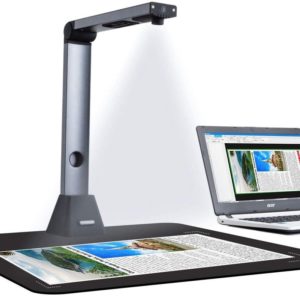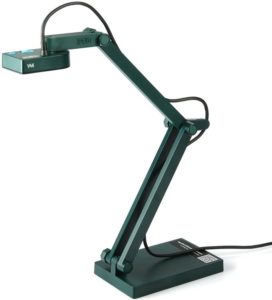Most of us have some sort of artistic outlet, even if it’s just to do for fun. It’s often essential to keep us sane, because all work and no play makes Jack a dull boy, right? We’d be willing to bet that, at some point, friends and family have seen your efforts and commented that you could make money from them, too. Perhaps they’re just being polite, using this comment as a different way of saying that they’re impressed. But what if they were right? In previous guides, we’ve looked at a couple of ways in which you can harness your creativity and potentially generate a passive income from it. But what if your medium is paint instead of pixels? Well, there’s a market for your work, too!
TL;DR
- Passive Income – depending on your approach, you won’t have to do too much to make money
- Free – little to no cost to begin selling art
- Multiple Revenue Streams – the same artwork can earn money in three or more ways
- Competitive – having a unique style will help your art stand out from a very competitive market
- Modest Earnings – you are very unlikely to get rich by selling art online, but you can make a living wage
What are Digital Art Sales?
Selling art online can take various different forms, some of which overlap with other topics we have covered in our guides. Some of these forms are pretty obvious and predictable while others may come as a bit of a surprise. Similarly, they each have different earning potentials and different degrees of complexity.
Without further ado, let’s start looking through them:
- Sell canvases through online marketplaces
- Try digital distribution
- Sell print-on-demand products
- License your art
- Teach others to be as good as you
The first approach is very obvious – the literal conclusion of the idea your friends and family raised a few paragraphs ago. You could stick your artworks up on eBay and see if you get some bids or make your own art website and sell works through that. Companies like Squarespace can help you make a simple portfolio site that would do the job, so you don’t have to be an expert web designer.
The downside with this approach is that it’s not particularly passive, nor is it likely to generate a consistent income. You’ll need to keep the website and/or eBay listings updated, do some marketing to spread the word that your works are available and post the canvases off when you make a sale. Unless you’re an outstanding artists or, more importantly, outstanding at marketing, you’re unlikely to get make a regular income this way.
The second option does a lot to increase the passivity, if not the income. Digital distribution has been very successful in various forms of media, such as computer games, music, TV shows and movies. So why not art? You can already download and print off photographs to hang up on your wall so it’s not even a new concept.
There’s no reason why your art couldn’t be sold and resold again and again. Digital distribution is just the same as selling prints of original works, but it saves you doing the printing and posting. Customers don’t even need to print them off, if they don’t want to – maybe your painting will become their new computer desktop background.
We’ve covered print-on-demand (POD) in a previous guide, but we can summarise it by saying that it’s effectively the same as digital distribution. The one big difference is how exactly your art is used. Again, unless your work is really outstanding, you’re relatively unlikely to make a huge number of sales of wall art, but that’s not the only way you can print an artwork.
POD takes cool graphics and applies them to T-shirts, cushions, phone cases, mugs, hats, tote bags and potentially more. And, of course, you could also sell wall art, with the advantage that, once again, you don’t have to do the printing or posting yourself.
The great advantage of print-on-demand services is that you don’t need to get these items manufactured in advance, making you reliant on successfully selling them to get your investment back and make a profit. Instead, you can just upload your design to a POD site and you’ll get your cut of any sales made. Everything else is handled by the site.
Art licensing could potentially see your artwork on many a wall, but almost no one would ever know it was yours. It works the same way as licensing stock photos – you license your designs directly to, for example, a home decor chain. They mass-produce it and add it to their stock and, if you negotiated well, you get a royalty rate for every one sold. There’s no easy way to achieve this, though – you’ll have to go out and try to sell your works directly, which adds more work to the process.
Finally, teaching others is less about the products of your labours and more about monetising the labours themselves. You could create an online course or a YouTube channel to show people how to create art like you do. You’ll need to check out our individual guides to online courses and YouTube to learn more.
How To Start Selling Art Online
You’ll need to get your hands on a high-resolution scanner to digitise the canvas with a quality good enough to be blown up and printed in large format. These are relatively easy to find and not even that expensive, for a relatively simple one.
From there, you will need to consult our individual guides for each of the respective passive income plans. In all cases, remember that marketing will be very important. You can put your paintings online, but no one will buy them if they don’t know that they are there.
– Example Scanner Options on Amazon
iCODIS X7 Book & Document Scanner – learn more – learn more

iCODIS Document Camera X3 – Learn More

IPEVO V4K Ultra High Definition – Learn More

Things to Consider before Selling Art Online
Remember that there’s nothing forcing you to stick to one source of passive income. You could potentially combine different approaches to optimise your income. For example, you could record the painting process to upload it to YouTube or Udemy, then sell the resultant work on eBay and sell prints on demand through Shopify. One painting therefore gives you three avenues of income and can potentially make money continuously, long after you’ve sold the actual canvas.
However, it’s worth noting that, even if you sell the painting three ways, you’re not likely to make huge amounts of money. At least, not immediately. It takes time to grow your brand and develop your notoriety to the point that people will want to buy your works at all, let alone for considerable sums. It might take years before you can make a living wage from it.
Also note that you will not be the only one trying to earn money through online art. You may need to go to extra efforts to start out in such a competitive market, though your own unique style will almost certainly be an asset for you.
How Much Does It Cost To Get Started Selling Arts Online?
The cost of starting to sell your art online mostly begins and ends at the cost of a good scanner. You can get a reasonable high-resolution A4 scanner for as little as $100 or as much as $1,000 for an extremely good one. If you plan to work with larger canvases, the costs will obviously go up. However, making money out of your scanned artworks is generally free, regardless of the approach you use.
Learn more about Selling Arts Online
If you are interested in learning more about Amazon FBA and how it can create you a passive income, check out these links:
High Definition Scanners – Use this search link to find the best options
Envato – you can sell all kinds of digital assets and art through the Envato platform
Patreon – changing how artistic talent is valued
Millo – How to make money as an artist in 2020
unDraw – Open source illustrations
Freesound – Database of Creative Commons Licensed sounds
Shopify – How To Sell Art Online – The Complete Guide

